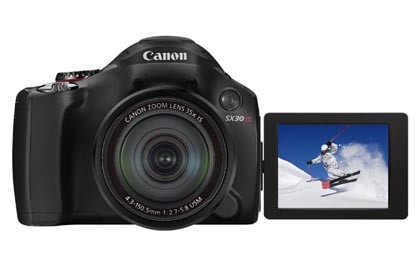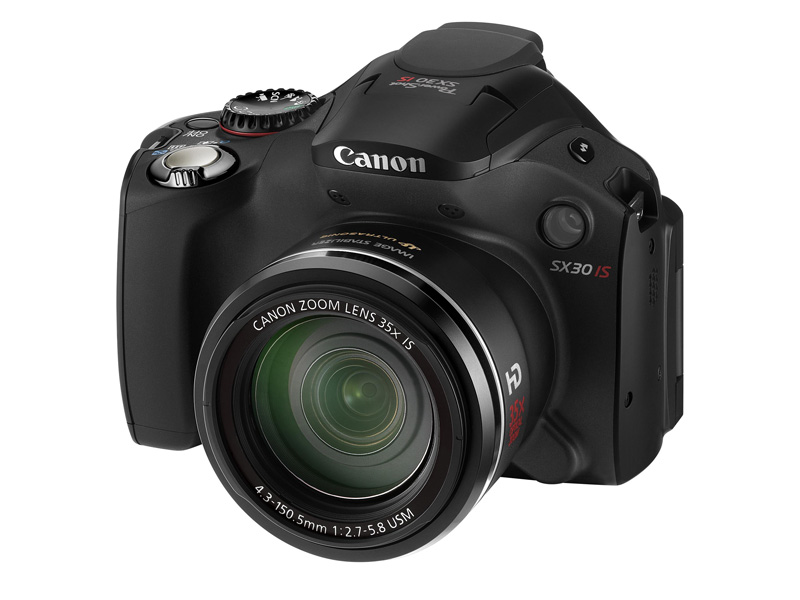Why you can trust TechRadar

In keeping with the bridge camera genre, the PowerShot SX30 IS looks like a mini DSLR. There's even pseudo button-bump where you'd expect the lens release to be.
In some lights the SX30 looks two-tone, but I think it's actually the result of the two different finishes used on the camera's surface. The fine texture of the deep fingergrip provides just enough purchase when shooting or carrying the camera, but lacks the adhesion of Canon's DSLR grips.
I am a fan of articulating LCD screens and the hinged 2.7in unit on the SX30 is good, making it much easier to shoot from a range of angles. Although the screen has a relatively low pixel count by modern standards (230,000 dots), it provides a clear view even when shooting outside in bright sunlight – though bear in mind I used it in the UK's October sun rather than tropical July sunshine.
I am slightly less impressed by the SX30's electronic viewfinder (EVF), which seems rather small and allows little latitude in your eye position. On the plus-side, the EVF has only a few fewer dots than the LCD screen (around 202,000 dots) and provides a reasonably detailed view of the scene being composed. It's frustrating that there's no eye sensor to detect when the camera is held to the eye and automatically switch between activating the LCD and the EVF; instead, the Display button must be pressed to toggle between the options.
The PowerShot SX30 IS is one of those cameras that almost anyone can pick up and use straightaway. The controls are sensibly arranged and easy to locate, although there is no direct access to the white balance options by default. I set this to be accessed via the Shortcut button to the top left of the LCD screen.
Those wishing to mix stills and video shooting will love the fact that the SX30 has a dedicated button that can be used to start recording 720p (1280x720 pixel) movies whatever the shooting mode selected.
Even stationary subjects can sometimes be hard to locate in the LCD or EVF when a long focal length lens is being used, but Canon's Zoom Framing Assist button to the right of the thumbrest on the back of the camera makes life much easier. While this button is depressed the lens zooms out allowing the photographer to see more of the scene and locate the main subject. It's a real bonus when the lens is zoomed into 840mm.
In good light the SX30's autofocus system performs pretty well. It doesn't exactly snap the subject into sharp focus, but it comes into register fairly promptly. Things slow down a little in lower light, with low-contrast subjects and at the longest point of the telephoto lens, but in most instances the SX30 manages to find the target. In continuous AF mode the SX30 managed to keep up with a jogger making his way up a steep hill towards me, but I don't think it is the camera I would use for faster moving sports and action.
Current page: PowerShot SX30 IS: Build, handling, performance
Prev Page PowerShot SX30 IS: Overview Next Page PowerShot SX30 IS: Performance